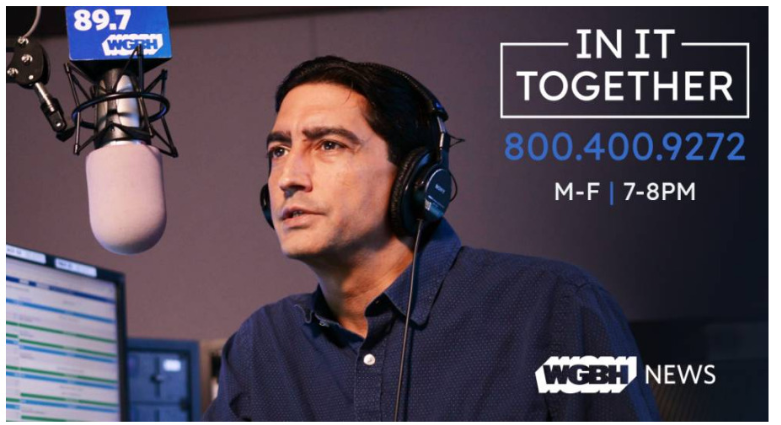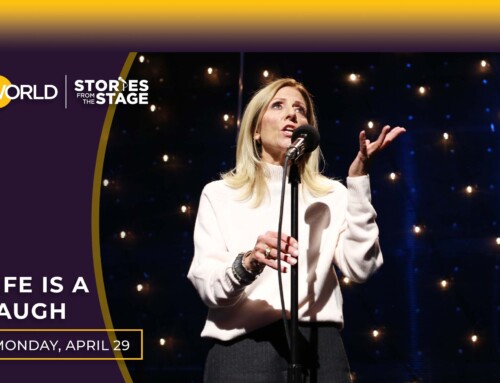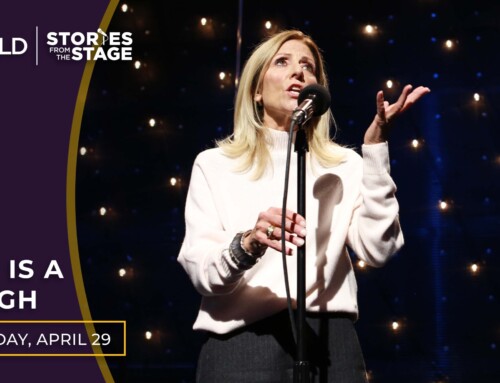On Wednesday April 22nd, 2020 at 7pm EST, Nina Livingstone was interviewed by Arun Rath for the WGBH radio show “In It Together” about the experience of being blind and deaf during the coronavirus pandemic. The full radio show can be accessed here.
Arun Rath:
Social distancing is challenging for everyone, but as time goes on we find ways to adapt. It’s human nature. Imagine finding ways to adapt in this pandemic when you can’t see or hear the world around you, where touching or holding are essential interactions for navigating the world around you. Joining me now is Nina Livingstone. She’s a Boston-based writer who is blind and has some deafness. Nina, thanks for calling in.
Nina Livingstone:
You’re welcome. I’m happy to be here.
Arun Rath:
I’ll ask you the standard question we ask everybody. How was your day today?
Nina Livingstone:
It was great. I want to say that when I first heard about the social distancing and the guidelines, it was a bit of a shock because I depend on volunteers and see friends. Usually, I take their elbows whenever I travel. Some use canes, some use seeing eye dogs, and I like my tech that’s usually taking volunteers, their elbows. That’s been a big cutoff since six weeks ago, I want to say. I think the onset of the guidelines was the 14th and it’s quite an adjustment.
Arun Rath:
I know as well from seeing you on social media and things you’ve written, you are a very socially active person, right?
Nina Livingstone:
I’m a staunch extrovert so this kind of thing is pretty difficult to grapple with. It’s an adjustment in that everything is done remotely, which thank goodness for a Braille display, so I’m able to read Braille and follow my computer and sometimes by phone, by Braille is another option. But it is isolating to some extent and isolation is no stranger to me since I lost my sight and hearing completely in the year 2000 due to Usher’s syndrome, combination of deafness and blindness, which eventually causes total blindness and deafness. But I also developed Meniere’s which is another inner ear disorder that causes nausea, vertigo, and deafness. I think what I’d learned in the year and four months being home in bed 24/7 because of the Meniere’s and deafness and blindness was that not to expect anything in the future but to really create something in the moment to keep my mind as busy as possible.
That is being creative. I’ve decided that I should teach myself Braille which, of course, was the appropriate time to do it. It took me a long period of time. The bump from print to Braille was important. But once I crossed that line, I was able to read more books. I promised myself that if I got through that period that I would be outside and be around friends and volunteers as much as possible. The way I’m seeing isolation right now is that it’s temporary and you can’t worry about, as we most do, how long is this going to last. That’s definitely the question. But it’s how do we make the best of today? What can I do to be creative? I’m still writing, still working on other project ideas. I did write about social distancing for Jewish Boston for example, and I love what I do and using a little humor, little videos, anything to keep creative and productive.
Mind you, when I often see my volunteers and friends as I have, I would always shake their hands simply because I want to know where they were located: in front of me, on the side, on the left. I put out my hands and one of my neighbors said, “I’ve seen you, you’ve got so many volunteers and friends, you’re always shaking hands.” She said, “Are you in politics?” I said, “No, I’m blind.” It’s just a habit of mine that I like to shake hands and it is kind of funny because I think that is how I feel sometimes. Like a politician. So much for the gloves and the mask, which I do.
Arun Rath:
Nina, that period that you were talking about, when you experienced that isolation, when you learned Braille, and had that kind of epiphany, how long did that last?
Nina Livingstone:
That was about, I would say, 14 months without sight and hearing completely. Before that happened to me, I had limited hearing, but I never thought that I would lose my sight completely until, maybe in the seventies. Then, my hearing, I thought I would keep it indefinitely. But it was the Meniere’s that worsened matters down the road there. That’s why I lost both sight and hearing that year. So I think being in bed and being sick because of the Meniere’s, the dizziness, which some folks might know because of the Meniere’s and what it does, I lost the rest of my remaining hearing. In that 14 months, I didn’t see anyone. I didn’t have so many friends and even volunteers. I didn’t have the connections that I have found since I got my cochlear implant. Ever since my cochlear implant, hearing in one ear, I’ve been just absolutely grateful and optimistic.
I still remain optimistic. I mean, I still can’t see, but I’m grateful. I’m so grateful. I have a lot of good friends and volunteers. I panicked a couple of weeks ago thinking, “Oh my goodness, how am I going to be able to see my friends and volunteers?” It breaks my heart. I talked to them on the phone, but when I go out there, I don’t know, six feet or 60 feet, or six inches distance. It’s not that easy for me to just walk with a cane aimlessly down the road because I can’t do that.
But one of my neighbors, she sent me a text. She said, “I wish we could walk with you, but you know, we’re following the guidelines”. And we all are, absolutely. She sent me a text Friday, the fourth week of our stay at home guidelines and the text said, “Check out your chair on the front porch.” I went outside, looked at the big chair, there’s a bottle of champagne. She sent me a text and said, “We all made it through the fourth week.” That was a neighbor. It was just a wonderful gesture and sense of community and neighbors caring about one another and that’s important.
Arun Rath:
Yeah, that’s lovely. I’m speaking with writer Nina Livingstone about her experiences in this pandemic. Nina is blind and has some deafness. Nina, you’re able to do a lot of your creative work. Obviously, you’re writing, you can do interviews remotely, things like that. But you do really love getting out. Are you able to get out?
Nina Livingstone:
I love it. I love people. I love being out, yeah.
Arun Rath:
Are you able to get out in a safe way right now?
Nina Livingstone:
Yes. I mean, I have a porch, I get outside. Yes, I do but not by car and not going into any store, abiding by the guideline. My volunteer, I thank the Mass Association for the Blind, I do have two great volunteers there who have been able to bring food, buy groceries. We don’t do any talking. We’re abiding by this six feet distancing so we talk but it’s just weird because they’re not … I’m so tactile when I see people, I like to, as I said before, shake their hands or hug them if I know them, and that absence is what it is for now.
Arun Rath:
I know you’ve written about this. What are you hearing from other friends of yours who are also blind or have other disabilities?
Nina Livingstone:
They’re feeling equally challenged. One of my friends in New York read the piece in Jewish Boston and she said the same thing that, “Oh,” she said, “you know, with social distancing, I was trying to cross the street and this gentleman came over to me and wanted to help me cross the street.” Now it’s really… She’s legally blind but she had a cane. She could see straight ahead but she couldn’t really figure out which street to cross visually. The gentleman offered to help her and she accepted his help. He took his help and she said, “He was so nice, but I was also really worried because I was wearing gloves and a mask, and I wasn’t sure, you just don’t know because we’re all kind of freaking out about social distancing.” I think everyone’s having a challenge and everyone has a disability more or less. It’s what we make of ourselves and what we’re able to do and how we’re able to use our time creatively and helping people. All of that is important.
Arun Rath:
There has been this really fascinating pattern. We’ve been doing the show for about six weeks now and we’ve done a series of interviews now with people, individuals, and people who represent individuals that we would think are having a harder time than any of us with social distancing and so on. We’ve talked to people with pre-existing conditions, with various disabilities, people dealing with economic hardship, and the pattern has been, we’ve talked through the difficulties they’re having, which are substantial and real, but then we hear this resiliency that I am hearing from you. Every single time we’ve heard this point of that actually having gone through what they’ve gone through, they’re in a way handling this, taking it in stride, which sort of seems the way that you’re talking after what you went through with your incredible experience of, I can’t imagine anything more terrifying than losing your sight and hearing and going through that period where you were isolated. But it seems like you are better equipped than any of us to deal with this.
Nina Livingstone:
I don’t know if that’s … I think it’s just because there’s so much from the time of being without sight and hearing, and going through … I mean, I know I wasn’t social, I wasn’t out, I wasn’t outside. I mean I just wasn’t and I was afraid of the unknown and what could to happen. In in the best Braille book I read, the Diary of Anne Frank, and it was in that book that I realized that what I was going through was not as seriously severe as what she had gone through, her family, and the people who had suffered through that time period that she described. That made me, it was like a wake-up call for me. I remember finishing the book and I’ll never forget it. She talked about the chink of light that she could see through a window. It was the same thing I was trying to focus on with the light that was fading in my eyes at the time.
Just saying to myself that the difference here, and I’ve said this before, is that I can go outside in this world when I am able to get a cochlear implant, that I can enjoy the sunlight and be out there. She talks about her sunlight, Anne Frank, in the window and not being able to get beyond the curtain, not being able to open the curtain, not being able to ever get out there. That, to me, was an important message that I had to stop crying and move on and get the implant, and I had a lot to live for.
Arun Rath:
I have that line right in front of me because I have your piece in front of me. From the Diary of Anne Frank she writes, “As long as this exists, this sunshine and this cloudless sky, and as long as I can enjoy it, how can I be sad?”
Nina Livingstone:
True, yeah.
Arun Rath:
Nina, it’s, it’s been such a pleasure speaking with you. I want to get you back on again so we can talk and have some fun because people need to realize you are hilarious. You’re a really funny writer and we want to get you on the talk about some more stuff, but it’s been such a pleasure speaking with you. Thank you.
Nina Livingstone:
Thank you very much. Thank you.
Arun Rath:
That’s Nina Livingstone. She’s a writer living in Boston. That’s it for tonight show. This is In It Together from WGBH. I’m a Arun Rath. Goodnight from my basement in Lexington. We’ll talk tomorrow.
“As long as this exists, this sunshine and this cloudless sky, and as long as I can enjoy it, how can I be sad?” ― Anne Frank, The Diary of a Young Girl








